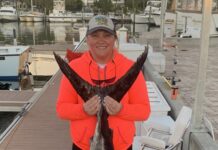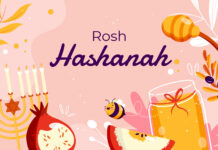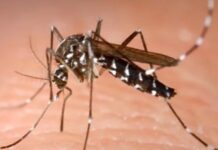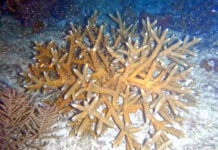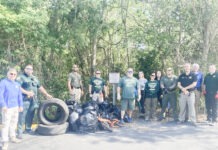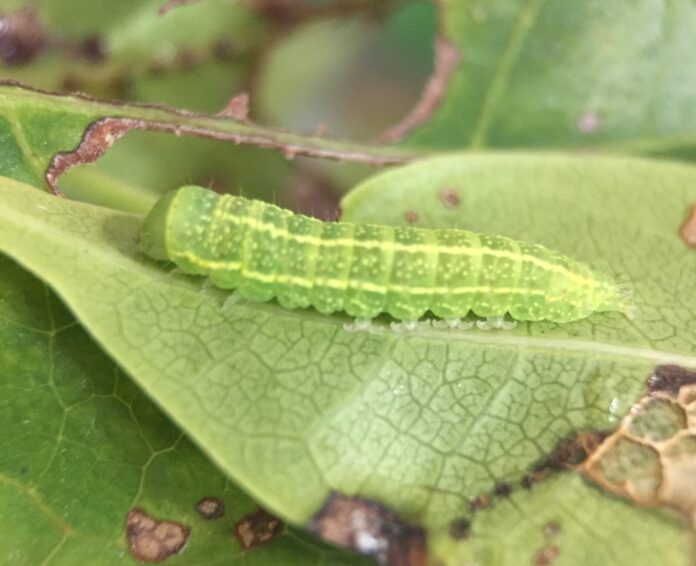
By Liah Continentino
Gumbo limbo trees are a beloved staple in Florida Keys landscapes.
These native trees are drought-tolerant, fast-growing and provide resources to local wildlife. Their smooth, coppery bark and attractive foliage are eye-catching and recognizable.
Gumbo limbo trees are affectionately nicknamed the “tourist tree” as their bark resembles the skin of sunburned tourists. Before the advent of modern plastics, gumbo limbo wood was often used to carve carousel horses due to its soft and lightweight qualities. This iconic tree is closely associated with island life; you may even have one at home.
Gumbo limbos are relatively pest-resistant, with whiteflies being their most common threat. However, the Monroe County Extension Service has recently become aware of a different type of leaf damage on gumbo limbo trees, called skeletonization.
Skeletonization occurs when the soft tissue of a leaf is eaten away, leaving behind thicker veins and giving the leaf a skeletal appearance. Skeletonization often results in leaf loss. If you’ve noticed that the leaves on your tree look a bit chewed up, you’re not alone.
The culprit is Paectes nana, an inconspicuous native moth species that feeds primarily on gumbo limbo trees. You may be wondering what is causing the sudden increase in herbivory. Several factors could be at play. Most lepidoptera species (moths and butterflies) feed during specific seasons, so the time of year is likely a factor. Weather patterns also contribute to population trends. Periods of drought followed by heavy rainfall often trigger a flush of tender, nutritious new growth, which is especially attractive to hungry herbivores.
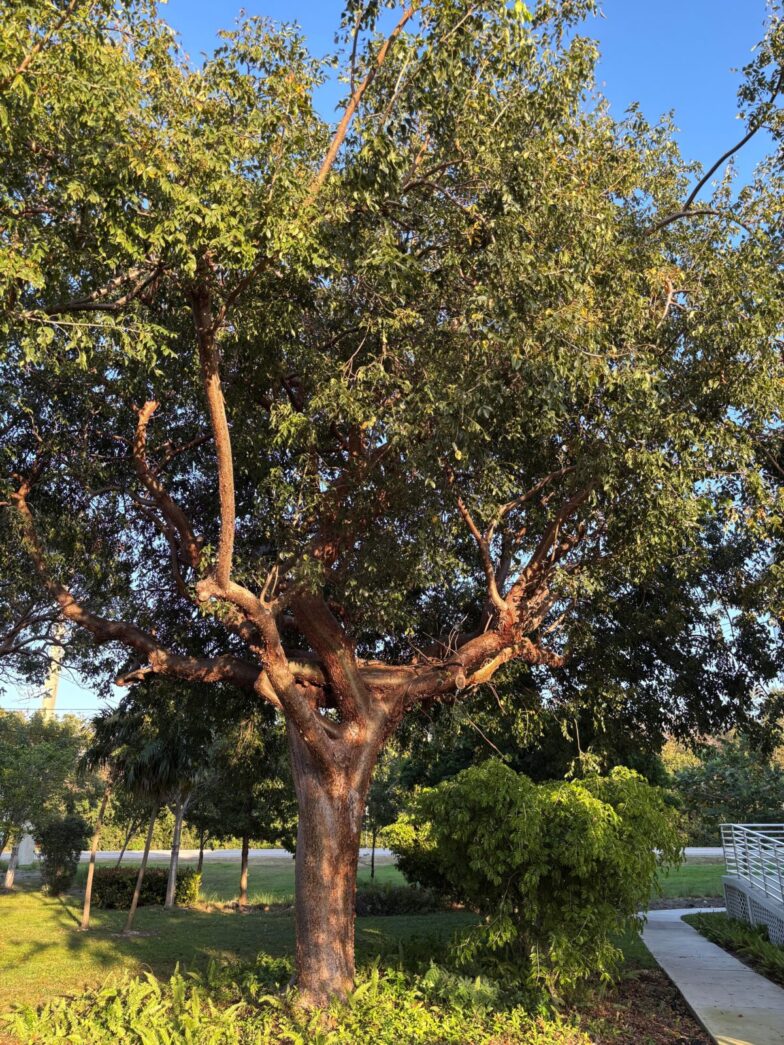
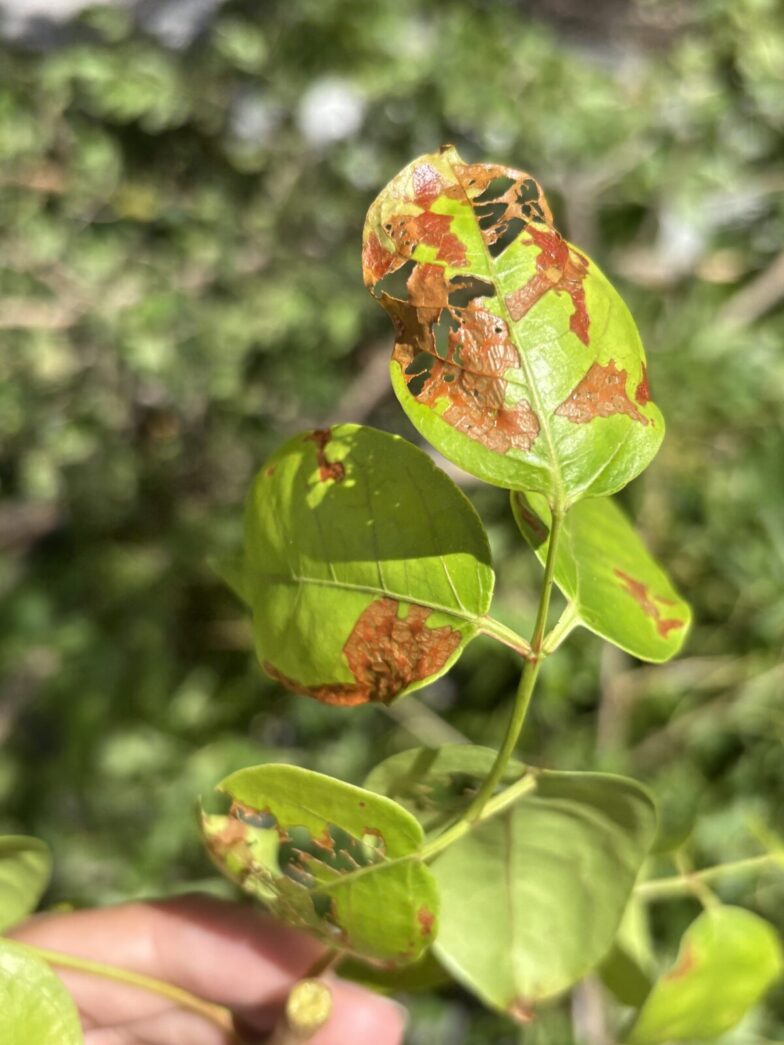
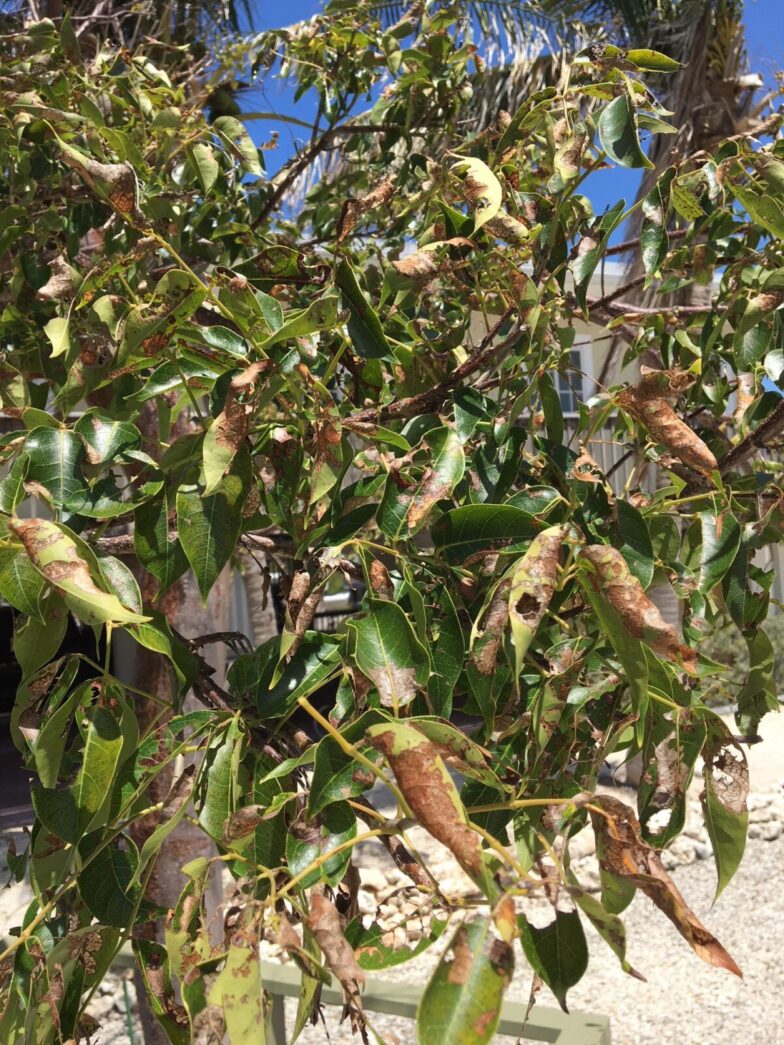
According to NOAA, South Florida experienced an abnormally dry spring, with above-average temperatures. This trend, punctuated by heavy rains in June, may have created opportunities for increased herbivory.
The good news is that your gumbo limbo can likely handle the extra nibbling. These trees are well-adapted to periodic herbivory from caterpillars. However, if your tree is already stressed, due to poor planting, transplant shock or disease, it may be more vulnerable. If you are in doubt, contact the Monroe County Extension Environmental Horticulture Agent for guidance. I am happy to assess your trees and determine what actions, if any, should be taken.
If your tree is otherwise healthy, the best approach is to let nature take its course. Moths provide many ecosystem services that bolster the health of our local ecosystem. One of those services is pollination. While it has become common to keep butterflies in mind when landscaping, moths often go unnoticed. In fact, there are only about 800 species of butterflies in North America, compared to over 11,000 species of moths.
Supporting moth populations helps our environment; so if you don’t mind a little herbivory, a hands-off approach could be an easy way to support local biodiversity. More information is at the Monroe County Extension Service at L.continentino@ufl.edu or 305-998-9580.







